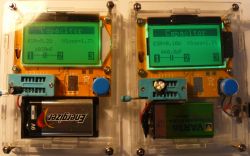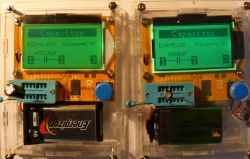rafcio_21 wrote:Unfortunately, I do not have a magnifying glass ...maybe something will interest you.

Czy wolisz polską wersję strony elektroda?
Nie, dziękuję Przekieruj mnie tam398216 Usunięty wrote:Sorry, I did not check what size I got, I meant something like that now it should be okrafcio_21 wrote:Unfortunately, I do not have a magnifying glass ...maybe something will interest you.
Jawi_P wrote:These 6F22 replacement batteries have seen a great solution in general. Those with a charging module have a step-up converter up to 9V? Is it just a USB charger? Because I browse the first better offer on ali or ebay and see what the seller wrote: - 9V in the title - 9V constant voltage - in the main picture (as suggested by some converter) - somewhere lower: 8.4V (which already suggests bare goals 2xLi-ion ), it's probably fully charged and will quickly fall below 8V. So they have 9V as type. Not every device wants to work at a voltage of
eurotips wrote:Yes, often less branded elements have considerable dispersions (capacitors). And when they work at higher temperatures, the parameters are already falling. Today, the Polish centrifuge at the end of the 70s and the electrolytic capacitor 10?F (rectangular and casing soldered at the edges) Measured by 2 meters and on each shows equally 10?F The fact that it is about 3 times larger than the current ones, but the capacitance parameters after 40 years is perfect.And you do not mistake the error of indications with the scatter of the parameters of the elements being measured? Because the capacity of 33nF at the declared 100nF is the last standard, even in the oscilloscope set for points.
flatron316 wrote:And how do you think?, What the actual capacitance can have a capacitor with a tolerance of +/- 10%.I measured and, for example, with new unused capacitors, it shows: on a 1u housing, 965nF measurement on a 1000uF housing, 930uF measurement on a 470uF housing, 485uF measurement. As you can see it is in some tolerances


KMal wrote:Which one is left ?? Is the newer one lighter, what is shown on the measurement of the 1003uF capacitor? Is the other newer, as shown by 473uF? Because on the left, you can read it anyway.The one on the left is the current delivery, clearly wider display (glass on the tape side).
